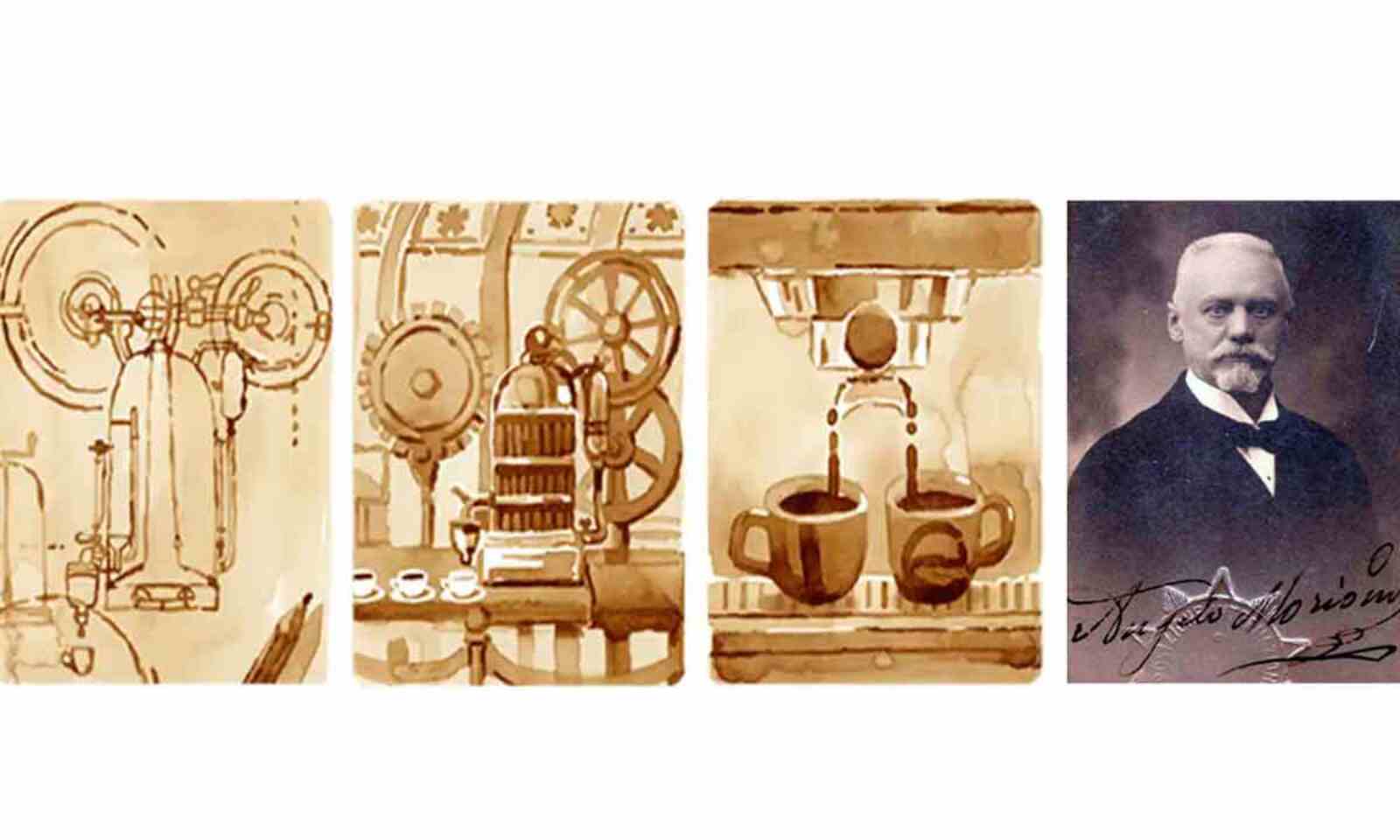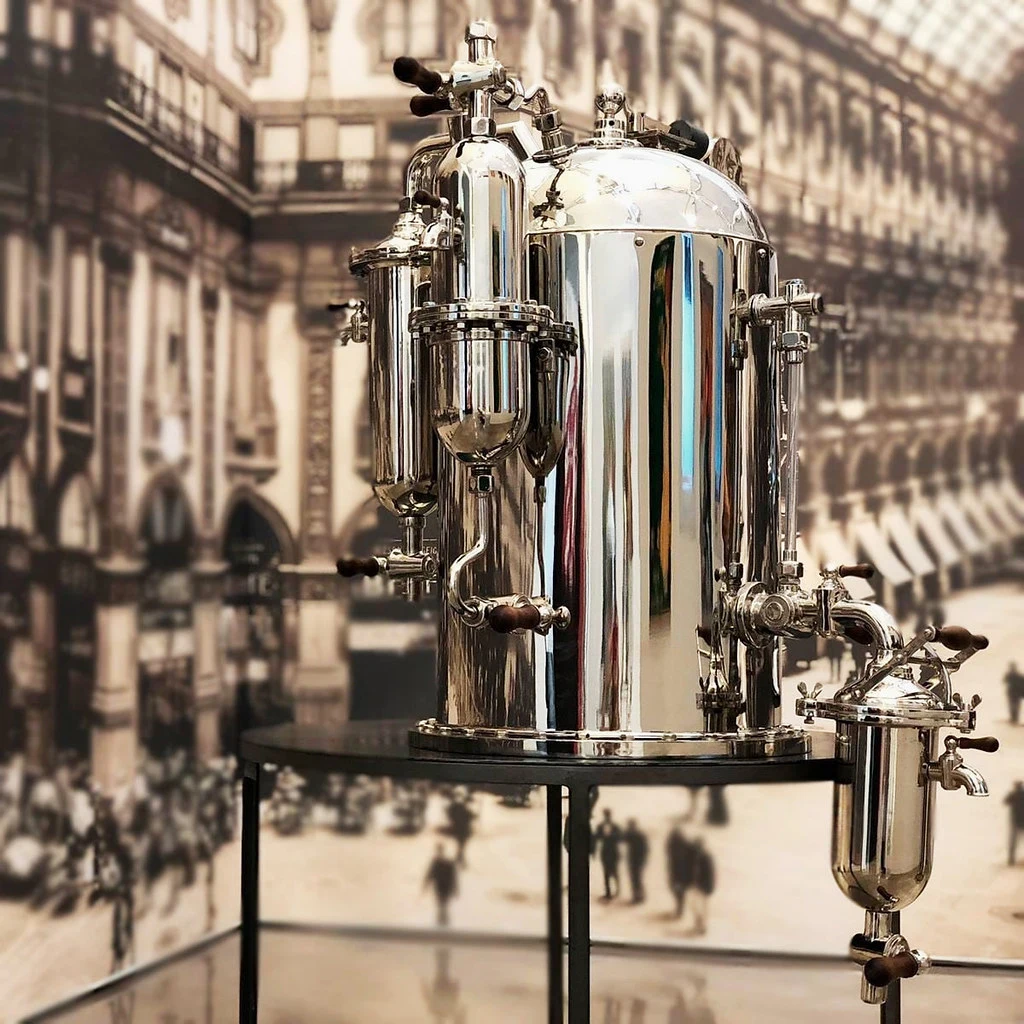Angelo Moriondo is often cited as the inventor of the espresso machine. While it’s true that he was responsible for several innovations that led to the creation of the first commercial espresso machines, his role in their invention has been somewhat overstated.

What we do know about Angelo Moriondo is that he was a pharmacist from New Improvements in Beverages, patented by Italian inventor Luigi Bezzera in 1901 and later acquired by Desiderio Pavese and Alessandro Zanetti in 1903. The details of how and why these men came together to create what we now recognize as a commercial espresso machine are murky at best.
To understand who Angelo Moriondo was and why he should be remembered as one of the greats, we need to take a look at his origins and learning process before diving into an analysis of his inventions and their impact on the world today.
Why is Google celebrating his birth anniversary?
On June 6th, Google is honouring Angelo Moriondo, the man who invented the first espresso machine, with a special Google Doodle to commemorate the 171st anniversary of his birth. Moriondo has been credited with creating the basis for espresso machines since the late 19th century.
Today, Google has paid tribute to his work by creating a special Google Doodle to celebrate his life. He was born in Turn, Italy, on June 6, 1851, and Google created a special Google Doodle to commemorate his achievements. The Doodle depicts an espresso machine in action. Olivia created the Doodle’s artwork, and coffee was used to create the initial draft.
Who Was Angelo Moriondo?
Angelo Moriondo was born in 1868 in Casale Monferrato, Italy. He was the only child of Pietro and Rossina Moriondo. Angelo Moriondo’s families were coffee roasters and coffee merchants, which allowed him to begin working with coffee at a young age. As a pharmacist, Moriondo’s work was focused on creating coffee drinks that were less bitter than espresso.
His first attempt at a sweeter coffee was a failure, as he reduced the pressure during the brewing process. This resulted in a “more soluble coffee, but a weaker beverage.” Angelo Moriondo continued experimenting with coffee and pressure, and after several years of research and testing, he discovered that a higher pressure could produce a “stronger flavour and aroma” without the bitter taste.

The Birth of a Coffee Lover
Angelo Moriondo’s fascination with coffee began at a very young age. According to his memoirs, his mother woke him up early every morning to help her prepare coffee for his father. This early exposure to coffee-inspired him to take a keen interest in the beverage throughout his life.
Moriondo’s memoirs also indicate that he was a very curious and experimental young man. To test his work as a pharmacist, he would try new drugs or chemical compounds on himself. This experimentation with drugs, coupled with his curiosity about coffee and eagerness to please his customers, pushed him to experiment with ways to make coffee drinks less bitter and more palatable.
Despite Moriondo’s passion for coffee, his career as a pharmacist was successful. He was able to open his pharmacy in Casale Monferrato and eventually expand to three more pharmacies throughout the region.
Inventing by Accident?
There are a few accounts of how Moriondo came to invent the modern espresso machine. One version of the story goes that Moriondo was experimenting with his coffee at home and accidentally created a small amount of high-pressure steam and a thick “syrupy” coffee. On a whim, he served this new beverage in one of his pharmacies and was shocked to discover that his customers loved the drink, calling it “Caffe espresso”.
Another version of the story claims that Angelo Moriondo was experimenting with high-pressure coffee in his laboratory when his machine broke. To recreate the experiment with a less durable machine, he took an old coffee pot and attached it to a steam boiler.
The Birth of a Machine
Moriondo’s original design for his espresso machine was fairly simple. It consisted of a boiler, a coffee pot, a pressure regulator, and a steam-powered piston. This espresso machine was incredibly rudimentary, but it was enough to produce the first taste of espresso that many people had ever tasted. It is unclear how many of Moriondo’s machines were produced, or how they were distributed.
It is also unclear how many of those machines are still in operation today. What we do know is that Moriondo’s original design was very limited in its functionality. It was a machine designed to produce a single kind of coffee drink: espresso.
Conclusion
While Moriondo’s role in the creation of the espresso machine is uncertain, his impact on the world of coffee cannot be denied. He was the first person to create a high-pressure coffee extraction, which results in a thick, syrupy coffee that is almost black.
This machine was capable of producing coffee drinks much faster than standard coffee pots. In addition to creating the first commercial espresso machine, Moriondo’s experiments with coffee also led to the creation of Turkish coffee, which is served in a style similar to espresso. He also created a machine to make Turkish coffee, which is still used in cafes today.
Although Moriondo is often credited as the inventor of the espresso machine, the exact nature of his role in the creation of the machine is unclear. What is clear, however, is that Angelo Moriondo was a coffee lover who made a major impact on the world of coffee with his bold and experimental nature.